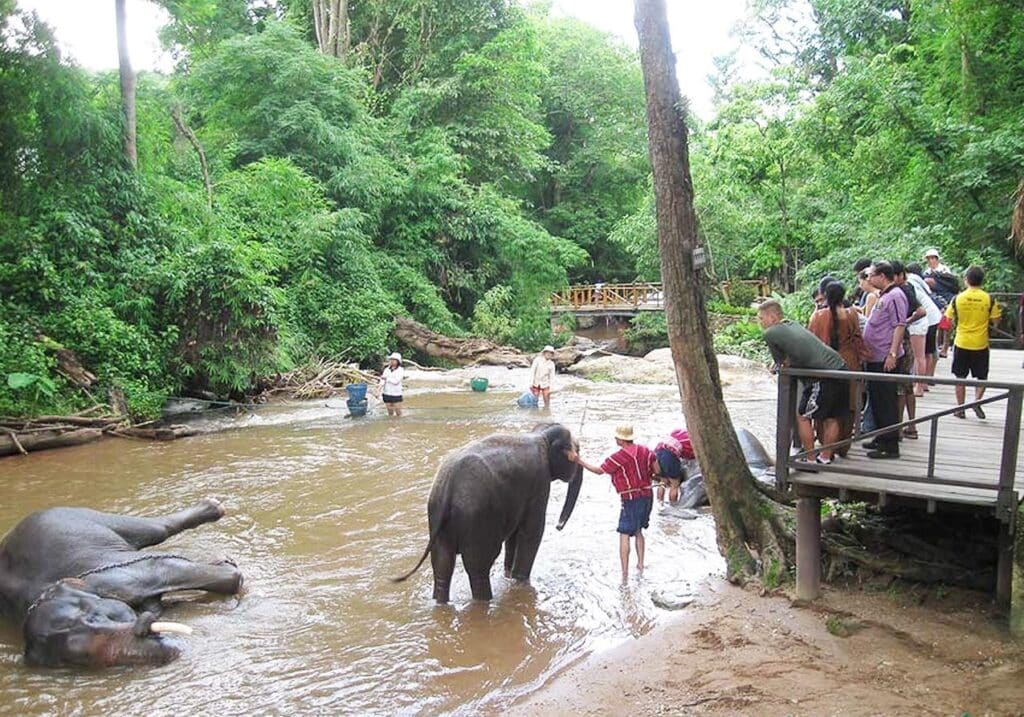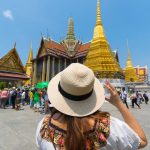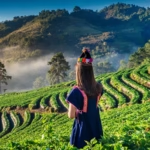CHIANG RAI, in the misty hills of Northern Thailand, is quietly transforming. Once seen mainly as a stop on the Golden Triangle route, the province is now rebranding itself as a hub for responsible travel, built on fair community partnerships, environmental care, and cultural respect.
As the Tourism Authority of Thailand (TAT) promotes its Sustainable Tourism Goals (STGs) and shifts the focus to “value over volume”, travellers in 2025 are invited to act as guardians of the region, not just passing guests.
This change matters. Thailand still attracts millions of visitors each year, but long-term pressure on nature and a global move towards conscious travel demand a different way of exploring. Chiang Rai, with its hill villages, jungle-covered mountains, and links to the Mekong River, offers an ideal setting for regenerative tourism, where trips leave a positive mark on both people and place.
Chiang Rai’s Jungles and Mountains: Living the Green City Vision
Chiang Rai is working towards recognition as a “Green City”, blending local knowledge with modern tools to keep development and conservation in balance. For travellers heading into the forests, plantations, and mountain trails, whether around Doi Mae Salong or along remote jungle paths, a few core habits help protect this fragile region.
- Choose Community-Based Tourism (CBT):
One of the most effective ways to explore the northern hills is by staying in approved homestays in local villages, including Akha, Lahu, or Lisu communities. Projects such as the award-winning Ban San Thang Luang, which has gained attention for supporting women in tourism, share income fairly across the village. Guest numbers stay low, which protects the land and water, while part of the money goes directly into schools, health care, and conservation work. Visitors can look for the TAT STAR (Sustainable Tourism Acceleration Rating) label to find verified sustainable operators. - Back Agroforestry and Organic Farming:
The valleys of Chiang Rai have become known for organic agriculture. Eco-conscious visitors can join workshops and farm stays at places like Rai Pian Kaew, where they can learn how farmers grow chemical-free mulberry, tea, and heritage rice. Some tours connect guests with agroforestry schemes that mix tree planting and farming. These activities help absorb carbon, protect topsoil, and support cleaner waterways, all while giving farmers a more stable income. - Travel Low-Carbon:
Chiang Rai has an international airport, but those who want to reduce their carbon footprint can choose the scenic overnight train from Bangkok, then continue by bus. Within the province, bicycles, e-bikes, and shared songthaews (local pick-up trucks with benches) keep emissions down and encourage slower, more meaningful contact with local life.
 Rivers and Sandbanks: Caring for the Mekong and Kok
Rivers and Sandbanks: Caring for the Mekong and Kok
Chiang Rai does not have southern-style island beaches, yet its rivers, especially the Mekong and the Kok River, play a similar role in local life. Sandbanks and river edges, sometimes nicknamed “beaches”, are vital for fish breeding, farming, and daily community use, and they need careful handling from visitors.
- Say No to Single-Use Plastics:
Plastic pollution is one of the biggest threats to rivers. Travellers should carry a reusable water bottle, since the “Refill My Bottle” network and many eco-certified hotels and guesthouses now offer refill points. Refusing plastic bags and straws at markets, and packing a reusable bag, cup, and cutlery set, cuts down waste before it starts. - Think About Where Rubbish Ends Up:
Recycling services outside the main town are still limited. When hiking, boating, or visiting small villages, the safest rule is simple: pack it in, pack it out. Accommodation that uses biogas systems, composting, or waste separation shows a real commitment to responsible waste management and is worth supporting. - Choose River-Safe Toiletries:
Even in the mountains, chemicals wash into streams. Sunscreens, soaps, and insect repellents can harm fish, insects, and plants. Travellers can switch to biodegradable, low-toxicity products for swimming, rafting, and jungle trips, which helps keep the Mekong, Kok, and smaller creeks healthier.
Ethical Wildlife Tourism: The New Standard Is Hands Off
Wildlife tourism across Thailand is changing fast, and Chiang Rai is part of that shift. Awareness of animal welfare has grown, and more visitors now demand ethical choices, especially when it comes to elephants.
- No Riding, No Tricks, No Shows:
The responsible visitor avoids elephant riding, painting shows, or performances. An ethical elephant experience places the animals first. The gold standard is a calm, mostly hands-off visit, where elephants move freely in natural surroundings, form social bonds, and behave as they would in the wild, without being forced to entertain. - Choose Genuine Sanctuaries:
A true sanctuary or rescue centre focuses on long-term care, not staged interactions. Money from entry fees should support food, land, veterinary treatment, and fair wages for staff, many of whom may be former mahouts retrained in kinder methods. Warning signs include:- Large group bathing sessions where visitors crowd around elephants
- Use of chains, tight restraints, or sharp tools such as bullhooks (ankus)
- Baby elephants are separated from their mothers for photos or close contact
- Respect All Wildlife, Not Only Elephants:
The same ethics apply beyond elephants. Travellers should refuse selfies with captive tigers, gibbons, slow lorises, or birds of prey, and avoid feeding wild monkeys and other animals, which leads to disease, aggression, and dependency. Visits to National Parks are a better choice, as entrance fees support patrols, habitat protection, and anti-poaching work.
Culture and Community: Travelling with Respect
Sustainable tourism is not only about forests, rivers, and animals. It also protects culture and dignity. Thailand’s “Amazing Thailand” campaign now highlights Meaningful Travel, which encourages visitors to slow down, listen, and take part in local life with care.
- Ask First and Buy Fair:
When visiting hill tribe villages, respectful travellers always ask before taking photos, especially of elders and children. They avoid items made from endangered species or protected plants. Instead, they buy handmade textiles, silverwork, baskets, and carvings directly from the artisans. This keeps traditions alive and helps families earn a fair price for their skills. - Honour Sacred Places:
Chiang Rai is home to unique temples, including the famous Wat Rong Khun (White Temple), which has adopted solar energy and removed single-use plastics from its grounds. Visitors show respect by dressing modestly, with shoulders and knees covered, speaking quietly, and following local etiquette such as the Wai, where hands are pressed together in greeting.
By travelling thoughtfully, the visitor to Chiang Rai in 2025 does more than enjoy a beautiful corner of Thailand. Each choice, from the homestay booked to the soap used in the shower, supports the long-term health of forests, rivers, wildlife, and communities. The future of tourism in Thailand’s north will be shaped by these small but steady steps, one gentle footprint at a time.





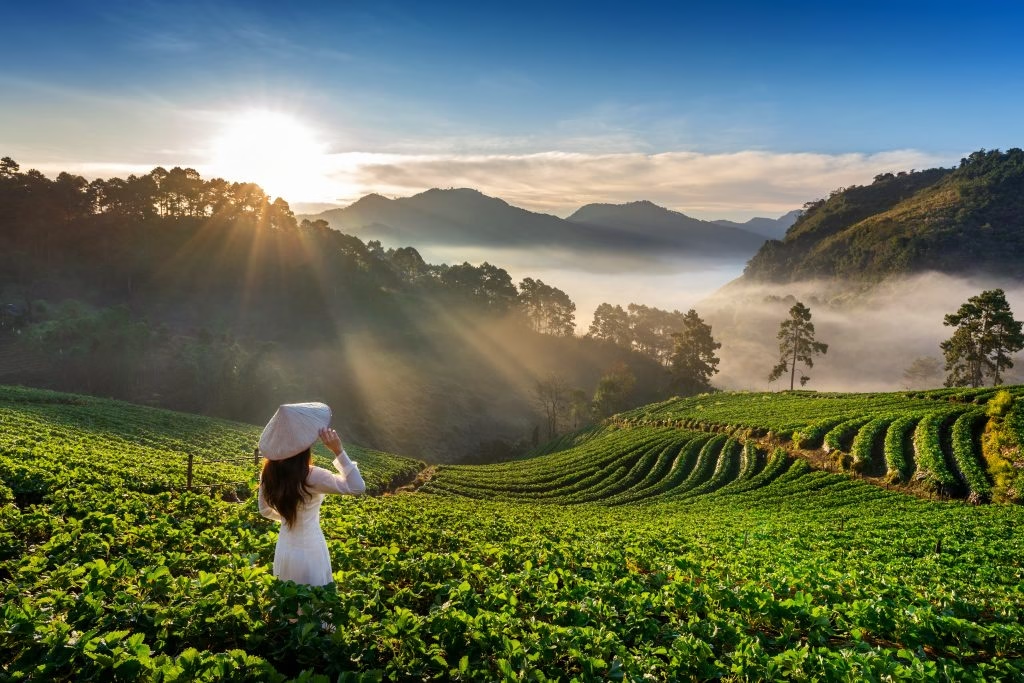
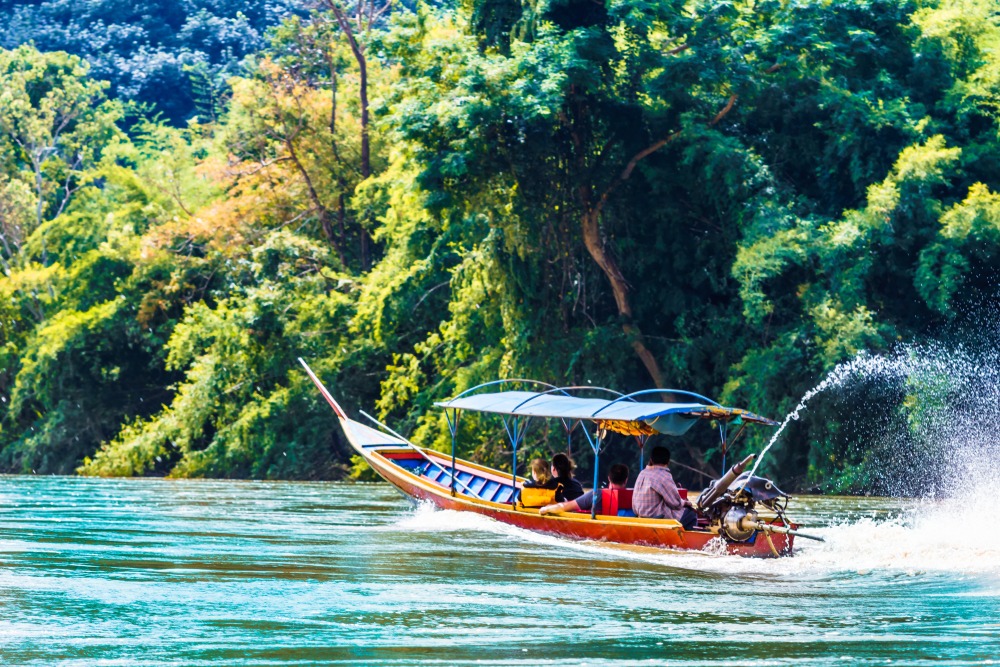 Rivers and Sandbanks: Caring for the Mekong and Kok
Rivers and Sandbanks: Caring for the Mekong and Kok